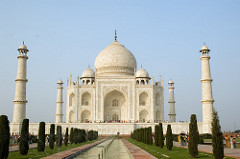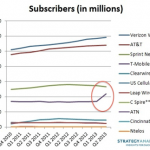On the night of Nov. 26, 2008, a commando team equipped with automatic weapons, grenades, and explosives, snuck ashore in Mumbai, India. Splitting into teams of two, they attacked a dozen locations across the city. 175 people were killed, including nine of the ten terrorists. Hundreds more were injured. It remains the most important incident of international terrorism since 9/11.
The epicenter of the attack was the Taj Mahal Palace Hotel, one of the most iconic buildings in the  city. There four of the terrorists holed up for two nights and three days, wantonly killing guests and staff, taking and executing hostages, and setting fires which eventually gutted much of the hotel.
city. There four of the terrorists holed up for two nights and three days, wantonly killing guests and staff, taking and executing hostages, and setting fires which eventually gutted much of the hotel.
The siege of the Taj quickly became an international story, much of it broadcast live on TV. Mostly it was a story of indiscriminate, wholesale killing and terror, and a seemingly confused and ineffectual response by police and militia. But as the smoke slowly cleared, another story emerged — an extraordinary story of heroism, selflessness, and devotion to duty. But surprisingly, it was not so much a story about extraordinary individuals as it was another chapter in the story of an extraordinary company.
The night of the attack, there were around 1200 guests and diners at the Taj, along with 600 hotel employees. These workers — waiters, busboys, room cleaners, front desk personnel — were all intimately familiar with the back exits and inconspicuous service pathways through the hotel. Despite that, the number of Taj employees who used that knowledge to flee the hotel for safety was . . . zero. Not a single one. Instead, many employees put their lives directly at risk to help ensure the safety of hotel guests.
At 9:30 p.m. on the 26th, a warning call from a hotel operator alerted staff at the hotel’s Wasabi restaurant that terrorists had entered the building and were heading their way. The senior waiter, Thomas Varghese, immediately instructed diners to crouch under tables, and directed employees to form a human cordon around them. A few hours later, after phone consultation with security personnel, a decision was made to try to get the diners out of the hotel via a nearby spiral staircase. All guests went first, followed by staff. Varghese, a 30-year Taj veteran, insisted on being the last to leave. He never got out — the terrorists arrived and gunned him down as he reached the bottom of the staircase.
This sort of selflessness turned out to be the rule rather than the exception. The hotel’s telephone operators were evacuated early in the siege, but then chose to return so they could call guests with ongoing updates and advice. Karambir Singh Kang, general manager of the Taj, continued to direct the evacuation of guests and coordinate the efforts of firefighters for another dozen hours after learning his own wife and children had been killed in the attack. CNN’s Fareed Zakaria reported, “I was told many stories of Taj hotel employees who made sure that every guest they could find was safely ferreted out of the hotel, at grave risk to their own lives.” Time after time, staffers would lead a guest(s) outside to safety, then turn and head back into the hotel to search for others. Such heroism cost 11 Taj employees their lives.
How to explain this? One might expect a handful, maybe even a few handfuls, of employees to exhibit heroic selflessness — and, in the process, stand out entirely from the norm. But everyone? All 600 choosing to put their hotel and its guests above their own personal safety? What explains such extraordinary devotion?1
An extraordinary company. The Taj Mahal Palace Hotel is owned by Tata Group, quite possibly the most extraordinary company (actually a confederation of related companies) on the planet. As a first glimpse into what makes Tata so special, let’s look at their response to the devastation of the terror attack.
Tata’s Response
Of course they vowed to rebuild the Taj and reopen for business as soon as possible. How could they not, given the selflessness of their employees. In fact, they reopened within a month, and were almost fully rebuilt within a year. But many other companies would have done the same. After all, that’s really just restoring one’s business. But what about restoring shattered lives, and a shattered community? That’s where Tata Group’s response departs rather dramatically from the norm.
The people-restoration response from Tata included:
- Ratan Tata, chairman of Tata Group, attended each of the funerals for Taj employees killed in the attack, and personally visited the families of all 80 employees who were killed or injured.
- During the period the hotel was closed, all employees continued to be paid their full salaries, even those who had previously completed as little as one day as a temporary worker. Payments were sent by money order to employees directly.
- In collaboration with the Tata Institute of Social Sciences, a counseling center was set up to assist any employees or family members who needed help.
- Every Taj employee was assigned a Tata mentor whose job was to act as a single-point-of-contact for ensuring that the employee received whatever help they might need.
- Tata committed to provide every family of a killed employee:
- A lump-sum payment of $80,000 – $190,000, depending on salary level.
- In addition, ongoing payment of the individual’s full salary — for the entire life of any dependent(s).
- Free education for children and other dependents — covering all education any individual might choose to pursue anywhere in the world.
- Free comprehensive medical and counseling care for all family members and other dependents — for the rest of their lives.
- Repayment of any loans or pay advances was waived, regardless of amount.
- Tata’s assistance, in fact, went well beyond Taj employees and family members, to include:
- Other individuals injured, and the families of those killed, in the attack were provided 10,000 rupees per month for six months. These included members of the police, railway workers, shopkeepers, pedestrians, etc. — i.e., people entirely unconnected to the Taj or Tata Group.
- New pushcarts for those whose carts were damaged in the attack. In addition, the four- year-old granddaughter of one pushcart vendor was shot several times. Tata got her transferred to Bombay Hospital and paid for all her care. (She made a complete recovery.)
Business/Society Taxonomy
A terrible tragedy. A remarkable response. But that’s only a small piece of what makes Tata so extraordinary. To truly appreciate the Tata Group, however, it’s helpful to first understand the prevailing taxonomy when it comes to the relationship between business and society. It is, by the way, a classification scheme into which Tata absolutely refuses to fit.
More than a few corporations hold to the view that their responsibility extends only to shareholders, not to society. This view was famously and emphatically articulated by William Henry Vanderbilt: “The public be damned. I run my railroads for my stockholders.” No doubt Milton Friedman would nod approvingly.
Over the last twenty years or so, an alternative notion has gained considerable traction. Under the umbrella label of “corporate social responsibility” (CSR), this view holds that corporations have a responsibility to ‘give back.’ This is generally taken to mean that corporations should engage (modestly) in philanthropic activities ranging, for example, from underwriting the local symphony to eradicating river blindness in Africa.
Marc Benioff, founder, chairman and CEO of Salesforce.com provides a good example. As an antidote to what he labels the tech industry’s “history of stinginess,” Benioff calls for a 1-1-1 model of corporate philanthropy, in which a company donates 1 percent of its stock, products, and employees’ working time, to its company foundation. As a result of this approach, the Salesforce Foundation has become an important philanthropic catalyst in San Francisco. Benioff and his wife Lynne have also been active directly, including donating $200 million to area children’s hospitals, with much of that going to fund a new facility in the down-and-out Mission Bay neighborhood.
Benioff has had some success enlisting other tech execs to follow his lead. Companies such as Google, Yelp and NetSuite have adopted variations of the 1-1-1 philanthropic model. Other tech chiefs have responded (‘You’re crazy’) less enthusiastically.
Another view also believes that corporations bear some responsibility to society, primarily along the lines of ‘do no harm.’ These companies tend to focus on being good corporate citizens, and especially on doing business in ways that foster environmental sustainability. Examples include Whole Foods, Ikea, W.L. Gore and Patagonia.
And then there’s one last business category: social enterprise. To most business people, though, social enterprise is sort of the bastard child everyone prefers to ignore. It seems to be an awkward hybrid, caught in a no-man’s-land between business and not-business. Social enterprises combine the ‘do good for society’ mission typically associated with nonprofits with the methodologies of for-profit business. Specifically, these organizations aim to sell a socially-beneficial product and make (at least a little) profit, thereby addressing a social need with a business solution. Unfortunately, very few social enterprises make it to self-sustainability, much less to a level of profitability that allows them to scale substantially. For the most part, therefore, they offer more promise than payoff, rarely achieving significant size, or escape velocity from the gravitational pull of dependence on donor and ‘impact investor’ funding.
Now permit me to interpret this taxonomy in the way it is understood by most business people. Some successful corporations are entirely indifferent to the needs of society. Others sense an obligation to society, but not a very big one (Salesforce.com’s one percent funding of a separate foundation tends to be at the most-generous end of the spectrum). Still others take their obligation to society more seriously, yet with a focus largely limited to not causing harm. And then we have social enterprises — organizations explicitly aimed at social good, but quite poor at the profitability and growth basics of business. As a result, almost all of these enterprises are small, struggling and, by comparison, inconsequential.
All of which leads most business people to conclude that achieving real business success and scale is entirely at odds with anything more than a very modest concern for society. Instead, their assessment of the business landscape reinforces their instinctive sense that the true ‘business of business is business,’ not creating social good. ‘Giving back,’ they conclude, is OK … but only so long as it doesn’t distract from the real mission of business.
And then there is Tata — standing as a giant repudiation of this entire way of thinking. Tata is both hugely successful and hugely committed to the betterment of society as its primary mission, and finds no conflict between the two. Here’s how company founder, Jamsetji Tata, put it: “In a free enterprise, the community is not just another stakeholder, but is, in fact, the very purpose of its existence.” The betterment of society as the very purpose of corporate existence? Hmmm, that’s certainly an outlier, a black swan conception of what business is meant to be about.
Here’s another take on the guiding mission of Tata, offered by Ratan Tata, chairman of the company between 1991 and 2012:
The philosophy of corporate social responsibility as practiced by Tata companies is a legacy of this organization’s founders, most prominently Jamsetji Tata. He considered the labour of establishing Tata companies as secondary to his mission of contributing to the industrialization of India and the emancipation of her people. Jamsetji Tata saw disciplines such as medicine and science and industries such as energy and steel as building blocks in the emergence of a brave and bright new country. His doctrine of social responsibility [remains] the central theme of the Tata way of business.”
JRD Tata, chairman of Tata Group from 1938 to 1991, put the case for the company’s social mission even more forcefully: “No business is worthwhile unless it serves the needs of the country and its people.”
It might be possible to dismiss Tata’s preoccupation with serving society as naive and outdated if the company wasn’t — in conventional business terms — so very successful. In 2011 The Economist described Ratan Tata as “the most powerful businessman in India and one of the most influential in the world,” and described Tata Group as “a giant too — or rather a collection of them.” They went on to note that the Tata business spans cars and consulting, software and steel, tea and coffee, chemicals and hotels, and then added:
Tata Consultancy Services (TCS) is Asia’s largest software company. Tata Steel is India’s largest steelmaker and number ten in the world. Taj Hotels Resorts and Palaces is India’s biggest luxury hotel group by far. Tata Power is the country’s largest private electricity company. Tata Global Beverages is the world’s second-largest maker of branded tea.
Notably, at the beginning of 2015 Tata became the first Indian business to hit $100 billion in revenue, up 20 percent in the most recent year. And its success is hardly limited to India. Tata operates in over 80 countries, and generates approximately 60 percent of its revenue outside India.
Still, it is Tata’s overarching mission to better society that makes it so compelling. This mission is pursued along three distinct pathways, and then in an almost innumerable number of specific projects and initiatives. One pathway is classically philanthropic . . . but in a very big way. Tata Sons is the holding company that oversees and knits together the Tata empire. It holds ownership stakes ranging between 25- 75 percent in (most of) the various Tata companies. In turn, Tata Sons is two-thirds owned by a series of charitable trusts set up by Tata family members. As a result, according to Morgen Witzel in his book, Tata: Evolution of a Corporate Brand, “two-thirds of the income Tata Sons receives from its holdings in such highly profitable companies as Tata Steel, Tata Chemicals and Tata Consultancy Services (TCS) goes to charity” — and is plowed directly into myriad health and education projects, disaster relief and economic development initiatives, and the creation and ongoing funding of important Indian scientific and cultural institutions.
But that’s just one pathway. Each of the individual operating companies is also expected to directly pursue a social betterment mission. This happens in two ways. On the one hand, Tata companies pursue business opportunities based, in part, on an evaluation of their potential to deliver social benefit. In fact, the original decision to start what is now Tata Steel was based primarily on an assessment that steelmaking would prove necessary if India was to develop into a modern industrial state. More recently, Tata Motors gained prominence for developing the Nano — a car initially priced at just $1600 and intended to make auto travel affordable for the masses. And in 2009, Tata Value Homes was launched, devoted to affordable housing.
But the operating companies pursue a rich panoply of their own philanthropic projects as well. Tata Steel runs a broad range of community programs — encompassing health, education, sports and culture — out of its Centre for Excellence. And its AIDS awareness program works in more than 700 villages around its home city of Jamshedpur. TCS has developed an innovative computer-aided adult literacy program through which more than 120,000 individuals have learned to read. Tata Motors has cured and rehabilitated more than 8000 leprosy patients. Taj Hotels provides vocational training to the underprivileged and differently-abled. And the list truly does go on and on.
Tata stands, therefore, as both a black swan and a bright beacon, proving to all the world that the advancement of business and society need not be at odds. Rather, business — if it so chooses — can be a powerful, intentional engine for human flourishing.
Faith and Business Questions
Which raises at least these two ‘faith and business’ questions:
Question One: If Jesus were a 21st century CEO, which business model do you think he would choose — the ‘public be damned’ version, the modest ‘give back’ version, the ‘do no harm’ version, or Tata’s ‘create the maximum amount of good for the maximum number of people’ version? I don’t believe the answer is difficult, so I’ll let you tackle that one on your own.
Question Two: Given the Tata evidence that business can operate (very) successfully with the betterment of society as its primary mission, why do we see so little evidence of other companies choosing the Tata pathway? In particular, why don’t we see more Christian business people pursuing a Tata-like mission?
Let me suggest a tentative answer. Actually, since this may prove provocative, I will let Tim Keller suggest an answer. In teaching about greed, Keller often makes three observations. First, that Jesus talks far more often about money and greed than about sex, or heaven, or hell, or virtually any other topic. Second, that with respect to greed, Jesus continually tells us to be alert, on guard, watchful — and never says this about other sins like adultery, or theft, or lying, or murder. And third, Keller notes that in his many years of pastoral counseling, he has never once had someone come to him to confess a problem with greed. Adultery, sure. Theft, sure. Greed, never. Why? Keller says it’s because the very nature of greed makes it hard to see in ourselves.
So if you’re one of those (many) business people who believes that social good could never be the primary purpose of a successful company, consider Tata. After which you may want to reconsider what’s really keeping you from embracing a ‘maximum social benefit’ mission for your own business.
Notes:
- Rohit Deshpande, a Harvard business professor who researches both business ethics and global branding, suggests his own answer. Writing a case study in the Harvard Business Review about the extraordinary selflessness and devotion demonstrated by Taj Hotel employees during the attack, Deshpande posits two factors: the Taj Mahal very intentionally recruits for character, and it does a very good job of quickly rewarding, and thereby reinforcing, excellent customer service.This seems to be a case of missing the forest for the trees. The Taj may be great at recruiting for, and rewarding, customer service — but laying down one’s life to protect the safety of guests goes way beyond top-notch customer service. No, I suspect the real reason Taj employees so consistently put the safety of others ahead of their own is because they had been deeply shaped and inspired by the others-first model of service practiced by Tata throughout its rich history.
Unless otherwise noted, Eventide is not an investor in companies discussed in this or other of our ‘faith and business’ columns, nor is there meant to be an endorsement, explicit or implied, of the entirety of any company’s business model, much less of all of a company’s business practices. Rather, aspects of the business model or practices of particular companies are discussed only to help illustrate contemporary examples of larger ‘faith and business’ topics.
The material provided herein has been provided by Eventide Asset Management, LLC and is for informational purposes only. Eventide Asset Management, LLC serves as investment adviser to one or more mutual funds distributed by Northern Lights Distributors, LLC, member FINRA. Northern Lights Distributors, LLC and Eventide Asset Management are not affiliated entities.











